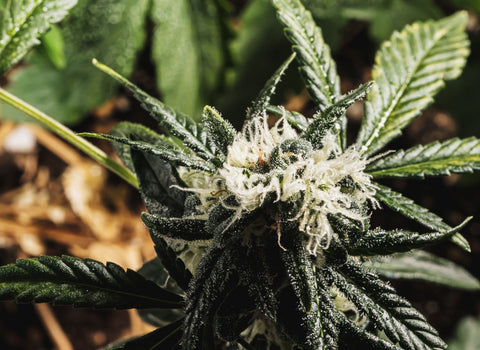
According to Cancer.net, the number of women diagnosed with uterine cancer has been rising by nearly 2% each year in women 49 and under, and by 1% in women over 49 in the United States.
Microdosing cannabis may be a promising approach for managing uterine cancer symptoms and fighting the disease. A 2020 study published in the Cancers Journal found that cannabis can contribute to the self-destruction (also known as apoptosis) of uterine cancer cells.
Low doses of cannabis offer more health benefits. Whether you're battling an illness or simply looking for a natural way to fight stress and anxiety, relieve pain, or support your overall health, our low-dose THC edibles are just the thing you need.
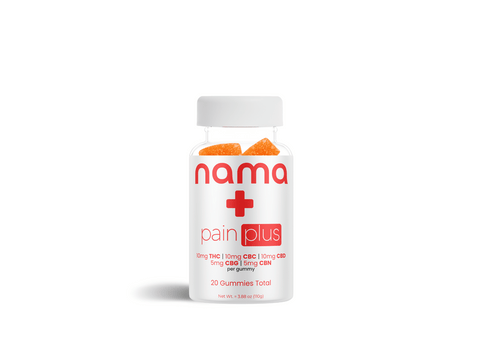

THC: 10 mg | CBC: 10 mg | CBD: 10 mg | CBG: 5 mg | CBN 5mg
Understanding uterine cancer
Uterine cancer starts in the uterus. It can start in different parts of the uterus such as the endometrium, muscle wall, or cervix (cervical cancer). Uterine cancers often grow slowly over years and can potentially be caught early with proper screening and attention to symptoms.
The most common type is endometrial cancer (which begins in the endometrium), accounting for over 90% of uterine cancers. The other, less common type of uterine cancer is uterine sarcoma. It forms in the muscles or other tissues of the uterus. It’s more aggressive than endometrial cancer and harder to treat.
Both types are more common after menopause. The symptoms of endometrial cancer and uterine sarcoma can be similar, but they often vary in severity and onset due to the differences in their aggressiveness and growth patterns.
What are the symptoms of uterine cancer?
The most common symptoms of uterine cancer include:
- Abnormal vaginal bleeding or discharge, not related to menstruation
- Pelvic pain or pressure
- Pain during intercourse
- Difficulty urinating or having bowel movements
- Unexplained weight loss
- Anemia
The symptoms don't usually appear until the disease is more advanced. The good news is, uterine cancer can often be caught early because it typically causes abnormal vaginal bleeding, which prompts women to see their doctor.
What causes uterine cancer?
The exact cause of uterine cancer is unknown, but certain factors can increase a woman's risk of developing it. Risk factors for uterine cancer include:
- Obesity
- Diabetes
- Hormone replacement therapy (HRT)
- Family history of uterine, ovarian, or colon cancer
- Early onset of menstruation (before age 12) or late menopause (after age 55)
- Never being pregnant
- Polycystic ovary syndrome (PCOS)
- Tamoxifen use for breast cancer treatment
- Radiation exposure to the pelvic area
- Lynch syndrome (hereditary non-polyposis colorectal cancer)
- Endometrial hyperplasia (precancerous condition)
If detected early, uterine cancer is highly treatable and has an excellent prognosis with appropriate treatment.
How is uterine cancer treated?
The treatment plan for uterine cancer depends on the type, stage, and grade of the cancer, as well as the patient's age and overall health. The main treatment for uterine cancer is surgery, which usually involves a hysterectomy (removal of the uterus) along with removal of the fallopian tubes and ovaries. For early-stage cancers confined to the uterus, this may be the only treatment needed.
For more advanced or higher-risk cancers, additional treatments may be recommended after surgery. These include:
- Radiation therapy uses high-energy radiation to kill any remaining cancer cells. This can be external beam radiation or internal radiation (brachytherapy).
- Treatment of chemotherapy uses medications that travel through the bloodstream to target and destroy cancer cells. Chemo may be given alone or combined with radiation.
- Hormone therapy involves medications that block or lower levels of hormones like estrogen and progesterone to prevent cancer cell growth. This is only used for certain hormone-driven cancers.
- Targeted therapy uses newer drugs that attack specific mutations or proteins in certain cancer cells while minimizing harm to healthy cells.
Many women with uterine cancer are turning to microdosing cannabis as a supplement to their regular treatments. While not a replacement for standard therapies, cannabis may help disrupt cancer growth signals and ease chemo side effects.
The anti-cancer properties of cannabis
Research has shown that cannabis has potent anticancer effects in preclinical models. A comprehensive review by Hinz and Ramer (2022) explains how cannabis compounds such as Delta 9 THC and cannabidiol (CBD) combat different cancer types.
The anti-metastatic action of cannabinoids
Cannabis compounds such as THC and CBD have inhibitory effects on the growth and spread (metastasis) of cancer cells. Synergistic effects of THC and CBD target and suppress signaling pathways involved in cell proliferation, such as the Akt/mTOR pathway. This leads to cell cycle arrest and prevents cancer cells from multiplying and spreading to healthy tissues.
Preet, et. al. found that “THC was able to inhibit tumor growth and lung metastases in a murine model of lung cancer.” This means that cannabis may help fight lung cancer. Honarmand, et. al. suggested that, besides the anti-metastatic effects, cannabis treatments in animal studies also reduced cancer cell proliferation and induced apoptosis.
Cannabis triggers cancer cell death
Cannabis may cause cancer cells to self-destruct (apoptosis) by disrupting their inner workings through mechanisms such as increased oxidative stress and activating "suicide" proteins. This selective induction of apoptosis in cancer cells helps to reduce tumor growth and slows its progression.
A 2005 study showed that Delta 9 THC can promote apoptosis in glioblastoma multiforme by selectively targeting GBM cells without significantly affecting normal brain cells. The results revealed that “treatment with THC produced dose-dependent inhibitory effects of cell viability and proliferation.” Read more about how THC helps combat brain cancer.
Cannabis suppresses angiogenesis in cancer cells
Cannabinoids can inhibit the formation of new blood vessels in cancer cells. This natural process is called angiogenesis and it’s important for all cells because it supplies them with fresh oxygen and nutrients. When angiogenesis is inhibited in cancer cells, this limits their growth and spread.
Blázquez, et. al. found several mechanisms by which THC and CBD suppress the expression of pro-angiogenic factors in cancer cells.
…at least two mechanisms may be involved in this cannabinoid action: the direct inhibition of vascular endothelial cell migration and survival as well as the decrease of the expression of proangiogenic factors (vascular endothelial growth factor and angiopoietin-2) and matrix metalloproteinase-2 in the tumors.
First, cannabis directly disrupts the formation of new blood vessels that feed the tumor. Second, it reduces the levels of proteins that enable cancer cells to spread and grow new tumor sites. This dual anti-angiogenic and anti-metastatic action helps starve and contain cancerous growths.
THC and CBD fight cancer through the endocannabinoid system
The endocannabinoid system (ECS) is a vital physiological network that helps maintain balance in the body, including regulating the immune response. While our bodies naturally produce endocannabinoids, phytocannabinoids found in plants like cannabis interact with our ECS in the same way. They bind to the endocannabinoid receptors (CB1 and CB2) to influence pain management, sleep, appetite, the immune response, and many other biochemical changes in the body.
Many cancer cells overexpress cannabinoid receptors, making them highly susceptible targets for cannabis compounds to activate cell death pathways. Fraguas-Sánchez, et. al. discovered that human leukemia cells expressed high levels of CB2 receptors. This means that leukemic cells are rich in CB2 receptors that cannabinoids can target to induce cancer cell death.
A 2019 study found that the endocannabinoid system plays a crucial role in the development, progression, and prognosis of gynecological disorders, including endometrial cancer, which is a type of uterine cancer. THC and CBD may inhibit endometrial cancer cell proliferation, reduce tumor invasion and metastasis, and induce cancer cell death through their interactions with the ECS.
Product QUIZ
Need help deciding what product is best for you? Take our quiz, just three questions until your perfect match!
Can cannabis help fight uterine cancer?
The research so far has mainly focused on studying the effects of cannabinoids on endometrial cancer, which is the most common type of uterine carcinoma. While data on other rarer types is scarce, we believe that the potent anticancer effects of cannabis against endometrial tumors could also be an effective treatment for other uterine cancers.
Italian researchers confirm the pro-apoptotic and anti-metastatic properties of cannabis for endometrial cancer, also suggesting that THC and CBD may potentially enhance the cytotoxic effects of chemotherapy drugs. They also suggest that the same anti-cancer effects of cannabinoids could potentially be an effective treatment against other types of uterine cancers and other types of gynecologic cancers.
Taylor, et. al. confirm that cannabis starves tumors by inhibiting cancer angiogenesis and modulates the ECS to regulate the dysregulated cell proliferation and immune function in many types of cancer. The study acknowledges that there is a lack of data specifically on cannabinoids and non-endometrial uterine cancers such as uterine sarcomas.
While more research is certainly needed, there is potential for cannabis compounds to help fight other types of uterine cancers beyond endometrial cancer, perhaps through similar anti-cancer mechanisms and ones not yet fully understood.
What we do understand is that microdosing cannabis offers greater therapeutic relief than higher, less reliable doses. Our Euphoria gummies, with just 10 milligrams of THC and CBD, offer a mildly euphoric experience alongside pleasant pain relief and reduction of stress and anxiety. They are perfect if you’re struggling with cancer pain or harsh chemotherapy-induced side effects.
"Your products helped me get off taking Ambien. I was on that drug for years and no longer have to rely on it or deal with the side effects!"
How can microdosing cannabis alleviate chemo-induced side effects?
Cannabis is most commonly used to treat chemotherapy-associated side effects. Tomko, et. al. suggested that “the therapeutic effects of cannabinoids are currently limited to the treatment of symptoms and pain associated with chemotherapy, while their potential use as cytotoxic drugs in chemotherapy still requires validation in patients.”
Fehniger, et. al. suggested that many women with gynecologic cancers find relief from cancer- and treatment-related side effects with medical cannabis, mainly for nausea and pain relief. Let’s see why the combination of THC and CBD offers relief from chemotherapy-induced side effects:
- Nausea and vomiting are some of the most distressing side effects for advanced cancer patients. Low doses of cannabis can significantly reduce these symptoms. By interacting with the endocannabinoid system's CB1 receptors, THC induces antiemetic effects, alleviating feelings of nausea and vomiting.
- Mental health is often compromised for people with cancer due to the stress of their diagnosis and treatment. Cannabis can manage anxiety and depression symptoms. CBD seems to interact with serotonin receptors in the brain to regulate mood. Small doses of cannabis can promote relaxation, improve mood, and reduce anxiety, thus improving the overall mental well-being of patients.
- Many cancer patients struggle with insomnia and poor sleep quality. Low doses of medical cannabis can help by promoting relaxation and reducing anxiety, two key components of healthy sleep. Learn about the pro-sleep properties of cannabis.
- THC and CBD have analgesic effects that can help with cancer pain relief. THC interacts with CB1 receptors to alter pain perception, while the anti-inflammatory effects of cannabidiol may contribute to reducing irritation and pain relief.
- Treatment of chemotherapy often leads to a reduced appetite, causing weight loss and weakening the patient’s immune system. THC is a well-known appetite stimulant. Through the CB1 receptors in the brain's hypothalamus, it stimulates the release of the hormone ghrelin, which triggers hunger.
Order our Relax Plus gummies to experience a new dimension of tranquility in your life. These easy-to-dose edibles provide the perfect balance of a low dose of Delta 9 and a higher dose of CBD, which work together to combat the side effects of chemo and other cancer treatments.
"These gummies make me feel like I’m being hugged by the sun. It’s the perfect formula to wind down the day and kick start an amazing sleep. It’s also hard not to eat multiple due to the fantastic watermelon taste."
What is the best way to microdose cannabis?
There are many different cannabis consumption methods: smoking, vaping, and tinctures, to name a few. But if you're looking to microdose, edibles such as our low-dose THC gummies and cannabis beverages are your best option.
We prefer edibles over other methods for a few key reasons:
- With gummies or beverages, the THC dose is clearly labeled on the packaging, taking the guesswork out of how much you're consuming. This allows you to meticulously control your microdose for the desired mild effects.
- When ingested, edible cannabis is metabolized differently. Our THC gummies can produce effects that last 6–8 hours versus just 1–3 hours from inhalation methods. The effects of our THC drinks last up to 6 hours for most people.
- Effects come on slower, preventing overconsumption. The onset of edibles takes anywhere from 30 minutes to 2 hours, which means the effects ramp up gradually, making it easier to gauge your optimal microdose without accidentally taking too much.
- Edibles avoid carcinogens and tar that can be inhaled from smoking cannabis or vaping concentrate oils. For those with respiratory issues or sensitivities, edibles are perfect because they completely bypass the lungs and any irritation from smoke or vapor.
- Low-dose THC gummies and cannabis-infused beverages offer the utmost discretion for microdosing, with no telltale scents to give you away. Gummies can be popped like any other candy, while infused drinks blend right in with other non-alcoholic beverages. They provide an easy, inconspicuous way to microdose cannabis wherever you go.
Whether you need relief from chronic pain, help to alleviate harsh side effects from cancer treatment, or simply want to feel delightfully relaxed with a mild buzz, our edibles are the perfect choice. We carefully craft gummies and beverages using premium cannabis extracts to deliver just the right dose for your needs. With delicious flavors and consistent, long-lasting effects, our edibles make microdosing an absolute treat.
Ready to experience blissful microdosing? Try our Bliss Delta 9 gummies. They are the perfect low-dose option to help manage anxiety, improve sleep, and bring some fruity delight to your day.
Is microdosing cannabis legal?
Microdosing Delta 9 THC is federally legal in the US under specific 2018 Farm Bill stipulations that say that Delta 9 THC edibles are legal if:
- The THC is derived from hemp, not marijuana
- The THC content does not exceed 0.3% by dry weight.
The Farm Bill removed hemp from the list of controlled substances, legally separating hemp from marijuana. This means that all of our edibles are 100% legal at the federal level because they’re made from organic hemp.
Check out our detailed guide to state-by-state THC legality for additional information.
If you’re looking to buy the best THC edibles in the country, nama™ is the obvious choice. We care about what goes into our gummies, so we make sure we use only the highest quality ingredients and natural flavors.
Uterine cancer FAQ
The best treatment for uterine cancer depends on the stage and type. It typically involves surgery to remove the uterus, fallopian tubes, and ovaries (hysterectomy). This may be combined with radiation therapy, chemotherapy, hormone therapy, or targeted therapies. Recent studies have shown that medicinal cannabis may have antiproliferative effects that could enhance conventional treatments.
There are some things you can do to reduce the risk factors for developing uterine cancer. Here’s what you can try:
- Get regular exercise to reduce the risk of obesity. Obesity has been linked to an increased risk of developing different types of cancer.
- Limit hormone replacement therapy when not medically necessary to lower your risk.
- Make sure you have a nutritious diet high in fruits and vegetables and minimize processed meat consumption.
Early studies suggest that medicinal cannabis may possess anti-cancer properties that could potentially aid in uterine cancer prevention, so you can add our low-dose THC gummies to your list of potentially preventive measures against cancer.
With proper treatment, many women can live for years after being diagnosed with uterine, especially if caught in the earlier stages. According to Cancer Research UK, the 5-year survival rate is 85–90% for stage 1 endometrial cancer. For later stages, survival rates decrease but new treatments may improve outcomes. Some people rely on the anti-cancer effects of cannabinoids such as THC and CBD to alleviate the side effects of cancer therapies and boost their effectiveness.
With endometrial cancer, try to avoid foods high in unhealthy fats, excess sugar, and processed meats which can promote cancer growth. Focus instead on a plant-based diet with fruits, vegetables, whole grains, and lean protein sources.
It is possible to have uterine cancer for several years without noticeable symptoms, especially in the earlier stages. This cancer often causes abnormal vaginal bleeding which prompts testing. Some women may mistakenly attribute bleeding to other conditions and delay seeking treatment, allowing the cancer to progress unknowingly.
The rate at which uterine cancer spreads depends on individual cases. In general, it tends to progress slowly, especially in the common endometrioid type. The more aggressive serous carcinoma and carcinosarcoma types can metastasize more rapidly if left untreated.
Top Sellers
New? Start with our Ultimate Sampler!

THC: 10 mg | CBC: 10 mg | CBD: 10 mg | CBG: 5 mg | CBN 5mg
Resources
Uterine Cancer - Statistics. (2023, June 30). Cancer.Net. https://www.cancer.net/cancer-types/uterine-cancer/statistics
Taylor, A. H., Tortolani, D., Ayakannu, T., Konje, J. C., & Maccarrone, M. (2020). (Endo)Cannabinoids and Gynaecological Cancers. Cancers, 13(1). https://doi.org/10.3390/cancers13010037
Hinz, B., & Ramer, R. (2022). Cannabinoids as anticancer drugs: Current status of preclinical research. British Journal of Cancer, 127(1), 1-13. https://doi.org/10.1038/s41416-022-01727-4
Preet A, Ganju RK, Groopman JE. Delta9-Tetrahydrocannabinol inhibits epithelial growth factor-induced lung cancer cell line migration in vitro as well as its growth and metastasis in vivo. Oncogene. 2008 Jan 10;27(3):339-46. doi: 10.1038/sj.onc.1210641. Epub 2007 Jul 9. PMID: 17621270.
Honarmand, M., Namazi, F., Mohammadi, A., & Nazifi, S. (2018, August 27). Can cannabidiol inhibit angiogenesis in colon cancer? Comparative Clinical Pathology. https://doi.org/10.1007/s00580-018-2810-6
McAllister SD, Chan C, Taft RJ, Luu T, Abood ME, Moore DH, Aldape K, Yount G. Cannabinoids selectively inhibit proliferation and induce death of cultured human glioblastoma multiforme cells. J Neurooncol. 2005 Aug;74(1):31-40. doi: 10.1007/s11060-004-5950-2. PMID: 16078104.
Blázquez C, Casanova ML, Planas A, Gómez Del Pulgar T, Villanueva C, Fernández-Aceñero MJ, Aragonés J, Huffman JW, Jorcano JL, Guzmán M. Inhibition of tumor angiogenesis by cannabinoids. FASEB J. 2003 Mar;17(3):529-31. doi: 10.1096/fj.02-0795fje. Epub 2003 Jan 2. PMID: 12514108.
Fraguas-Sánchez, A. I., Martín-Sabroso, C., & Torres-Suárez, A. I. (2018). Insights into the effects of the endocannabinoid system in cancer: A review. British Journal of Pharmacology, 175(13), 2566-2580. https://doi.org/10.1111/bph.14331
Luschnig, P., & Schicho, R. (2019, May 24). Cannabinoids in Gynecological Diseases. Medical Cannabis and Cannabinoids. https://doi.org/10.1159/000499164
Marinelli, O., Morelli, M. B., Annibali, D., Aguzzi, C., Zeppa, L., Tuyaerts, S., Amantini, C., Amant, F., Ferretti, B., Maggi, F., Santoni, G., & Nabissi, M. (2019). The Effects of Cannabidiol and Prognostic Role of TRPV2 in Human Endometrial Cancer. International Journal of Molecular Sciences, 21(15), 5409. https://doi.org/10.3390/ijms21155409
Tomko, A. M., Whynot, E. G., Ellis, L. D., & Dupré, D. J. (2020). Anti-Cancer Potential of Cannabinoids, Terpenes, and Flavonoids Present in Cannabis. Cancers, 12(7), 1985. https://doi.org/10.3390/cancers12071985
Fehniger, J., Brodsky, A. L., Kim, A., & Pothuri, B. (2021). Medical marijuana utilization in gynecologic cancer patients. Gynecologic Oncology Reports, 37, 100820. https://doi.org/10.1016/j.gore.2021.100820
Uterine cancer statistics. (2024, January 30). Cancer Research UK. https://www.cancerresearchuk.org/health-professional/cancer-statistics/statistics-by-cancer-type/uterine-cancer
nama CBD FDA & legal disclaimer
Our products are not intended to diagnose, treat, cure, or prevent any disease. They are not a replacement for prescription medications and have not been evaluated by the U.S. Food and Drug Administration (FDA).
The information provided on this website does not and is not intended to, constitute legal advice or any statement of the status of any laws. Any information, content, and materials available on this site are for general informational purposes only and are not intended to be relied upon for any purpose.
Readers of this website should contact their attorney to obtain advice concerning any particular legal matter, including decisions on what products are, or are not, legal to sell, possess, or consume. No reader, user, or browser of this site should act or refrain from acting based on the information on this site without first seeking legal advice from their counsel in the relevant jurisdiction.
About
Learn
Join us on this journey

© Copyright 2026 nama Products LLC. All Rights Reserved.
†These statements have not been evaluated by the Food and Drug Administration. These products are not intended to diagnose, treat, cure or prevent any disease. All information presented here is not meant as a substitute for or alternative to information from health care practitioners. Please consult your health care professional about potential interactions or other possible complications before using any product.
††The information provided on this website does not, and is not intended to, constitute legal advice or any statements of the status of any laws. Any information, content, and materials available on this site are for general entertainment purposes only, and are not intended to be relied upon for any purpose.

By clicking ‘Yes,’ you agree to our
Terms & Conditions and Privacy Policy
123 John Doe Street
Your Town, YT 12345
Store Hours
Sun: Closed
Mon-Fri: 9:00 - 17:00
Sat: 10:00 - 13:00
What to expect at pickup
Closed
Closing at 5pm
Closing at 5pm
Closing at 5pm
Closing at 5pm
Closing at 5pm
Closing at 1pm



![Euphoria Kiwi Raspberry [10ct]](http://www.namacbd.com/cdn/shop/files/nama_kiwi_raspberry_pouch.png?v=1715285056&width=480)
![Euphoria Kiwi Raspberry [10ct]](http://www.namacbd.com/cdn/shop/files/nama_euphoria_kiwiraspberry_nutrition_facts.jpg?v=1715873960&width=480)
![Euphoria Triple Berry [10ct]](http://www.namacbd.com/cdn/shop/files/nama_euphoria_triple_berry_pouch.png?v=1715286095&width=480)
![Euphoria Triple Berry [10ct]](http://www.namacbd.com/cdn/shop/files/nama_euphoria_tripleberry_nutrition_facts.jpg?v=1715873950&width=480)
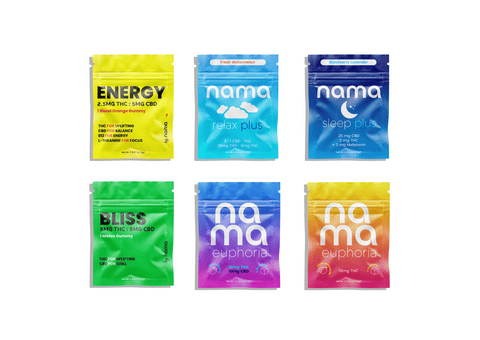

![Buzz Drops™ [THC Drink Drops]](http://www.namacbd.com/cdn/shop/files/nama_thc_buzz_drops.png?v=1711412866&width=480)
![Buzz Drops™ [THC Drink Drops]](http://www.namacbd.com/cdn/shop/files/buzz-drop-wine-comparison.png?v=1736882023&width=480)
![Buzz Packs™ [THC and CBD Powder Drink Mix]](http://www.namacbd.com/cdn/shop/files/nama_buzz_packs_thc_drink_pack_white_background.png?v=1741884660&width=480)
![Buzz Packs™ [THC and CBD Powder Drink Mix]](http://www.namacbd.com/cdn/shop/files/Buzz_Packs_Label.png?v=1741884660&width=480)
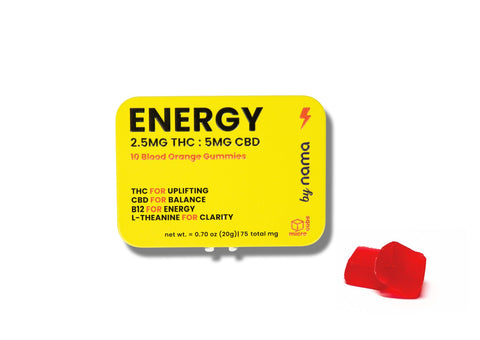
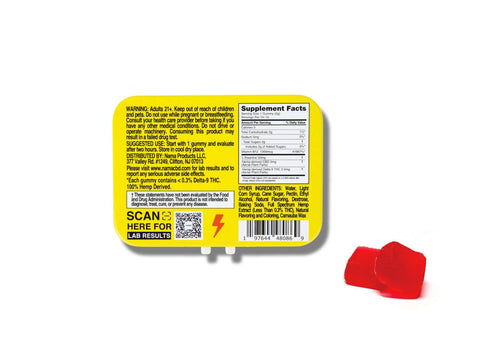
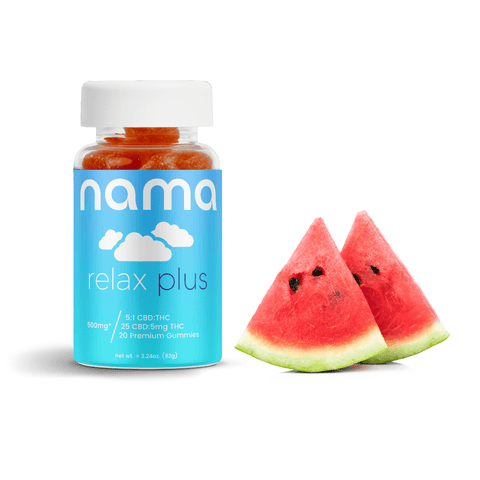

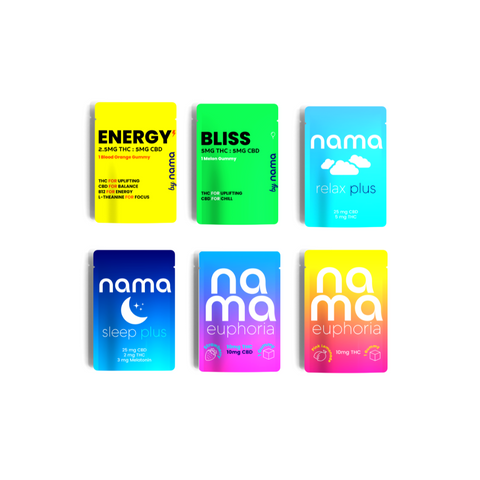
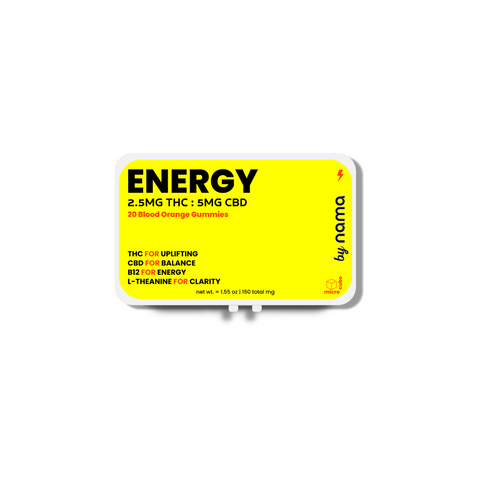

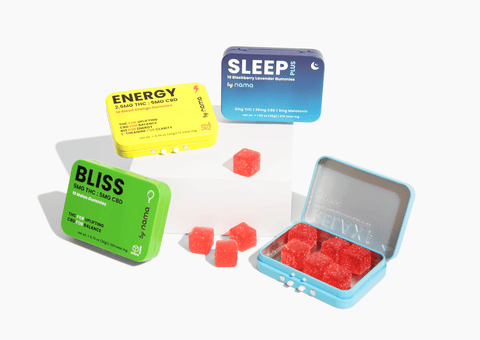
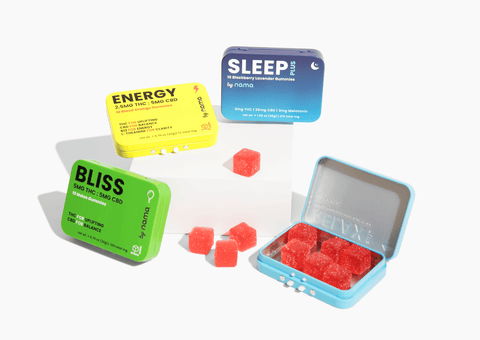
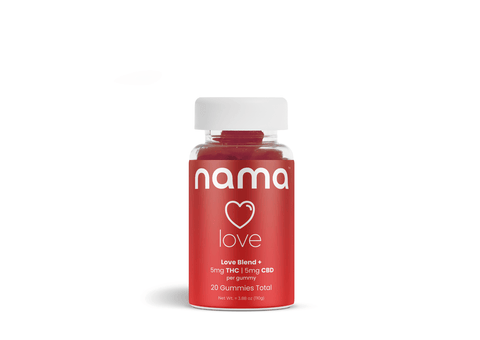
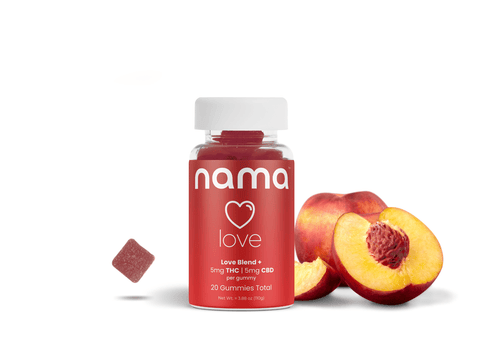
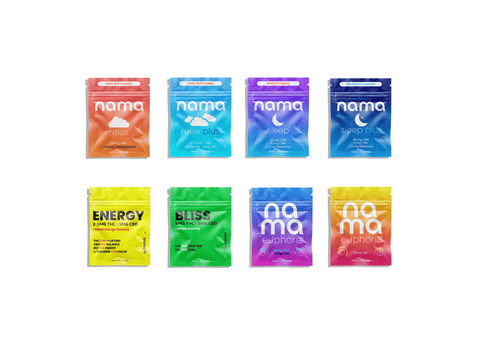

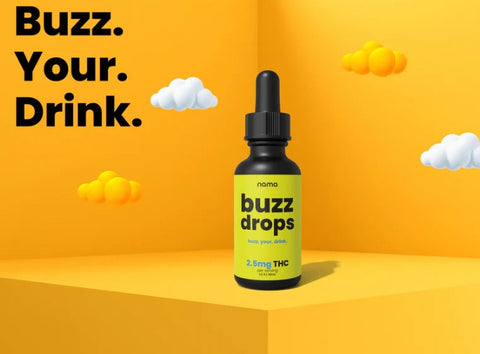
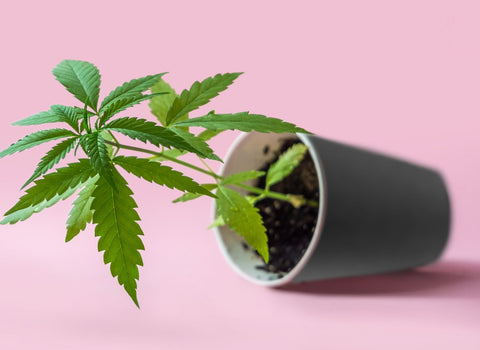

Comments (0)
There are no comments for this article. Be the first one to leave a message!